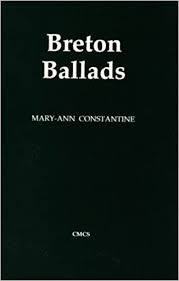
Ys, also spelled Is or Kêr-Is in Breton, and Ville d'Ys in French, is a mythical city on the coast of Brittany that was swallowed up by the ocean. Most versions of the legend place the city in the Baie de Douarnenez.

Denez Prigent is a Breton folk singer-songwriter of the gwerz and kan ha diskan styles of Breton music. From his debut at the age of 16, he was known for singing traditional songs a cappella, and has moved on to singing his own songs with techno music accompaniments. He has performed in France as well as internationally and has recorded seven studio and two live albums.
Gwenc'hlan is the cognomen of a legendary 6th century Breton druid and bard called Kian, the subject and purported author of a Breton song called "Diougan Gwenc'hlan", published by Hersart de la Villemarqué in his 1839 anthology Barzaz Breiz.

Barzaz Breiz is a collection of Breton popular songs collected by Théodore Hersart de la Villemarqué and published in 1839. It was compiled from oral tradition and preserves traditional folk tales, legends and music. Hersart de la Villemarqué grew up in the manor of Plessix in Nizon, near Pont-Aven, and was half Breton himself.

Breton literature may refer to literature in the Breton language (Brezhoneg) or the broader literary tradition of Brittany in the three other main languages of the area, namely, Latin, Gallo and French – all of which have had strong mutual linguistic and cultural influences.

Théodore Claude Henri, vicomte Hersart de la Villemarqué was a Breton philologist and man of letters.
"The Maid and the Palmer" is an English language medieval murder ballad with supernatural/religious overtones. Because of its dark lyrics, the song was often avoided by folk singers. Considered by scholars to be a "debased" version of a work more completely known in European sources as the Ballad of the Magdalene, the ballad was believed lost in the oral tradition in the British Isles from the time of Sir Walter Scott, who noted a fragment of it having heard it sung in the early years of the nineteenth century, until it was discovered in the repertoire of a living Irish singer, John Reilly, from whom it was collected in the 1960s, although subsequently other versions have surfaced from Ireland from the 1950s to the 1970s; an additional full text, collected and notated in around 1818, was also recently published in Emily Lyle's 1994 Scottish Ballads under the title "The Maid of Coldingham", having remained in manuscript form in the intervening time. Based on a tape of Reilly's performance provided by the collector Tom Munnelly, the singer Christy Moore popularised the song under its alternate title "The Well Below the Valley" with the Irish folk band Planxty and later solo performances/recordings, this song providing the title of that group's second album released in 1973; the song has subsequently been recorded by a number of more recent "folk revival" acts.

Nora Kershaw Chadwick CBE FSA FBA was an English philologist who specialized in Anglo-Saxon, Celtic and Old Norse studies.
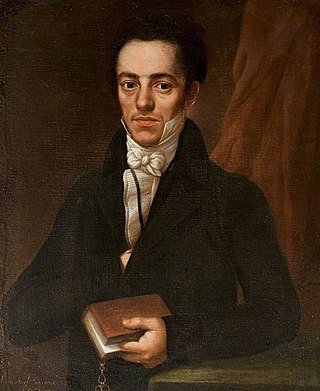
The Reverend Thomas Price was a historian and a major Welsh literary figure of the early 19th century. Price was also "an essayist, orator, naturalist, educationalist, linguist, antiquarian, artist and musician". He contributed to learned and popular journals and was a leading figure in the revival of the Eisteddfod.
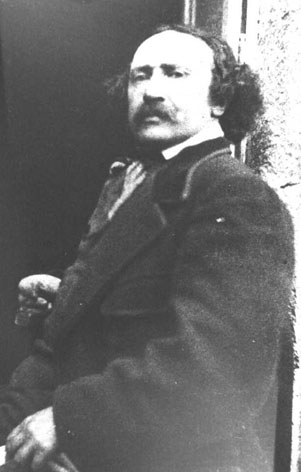
François-Marie Luzel, often known by his Breton name Fañch an Uhel, was a French folklorist and Breton-language poet.
Françoise Morvan is a French writer who specialises in Breton history and culture.
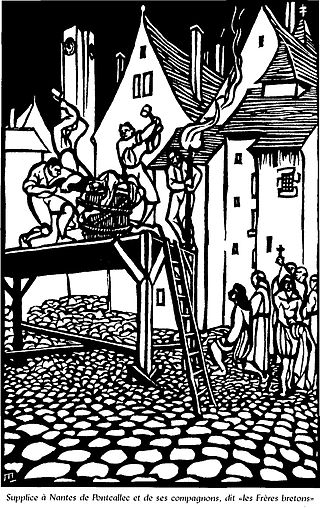
The Pontcallec conspiracy was a rebellion that arose from an anti-tax movement in Brittany between 1718 and 1720. This was at the beginning of the Régence (Regency), when France was controlled by Philippe II, Duke of Orléans during the childhood of Louis XV. Led by a small faction of the nobility of Brittany, it maintained links with the ill-defined Cellamare conspiracy, to overthrow the Regent in favour of Philip V of Spain, who was the uncle of Louis XV. Poorly organised, it failed, and four of its leaders were beheaded in Nantes. The aims of the conspirators are disputed. In the 19th and early 20th century it was portrayed as a proto-revolutionary uprising or as a Breton independence movement. More recent commentators consider its aims to have been unclear.
Morvarc'h is the name of a fabulous horse of Breton legend found in two folktales reworked in the 19th and 20th centuries. Though its name appears in older sources, it was invented or reinterpreted by Charles Guyot, who named it Morvark in his version of the legend of the city of Ys in 1926. It belongs to the "Queen of the North" Malgven, who gives it to her husband King Gradlon. Endowed with the ability to gallop on the waves, Morvarc'h is described as having a black coat and as breathing flames through its nostrils. It also appears in a Breton folktale about King Marc'h of Cornouaille. In the course of a deer hunt it is killed by its own rider's arrow, which has been turned around by the spell of Dahud, the daughter of Malgven. She then puts the ears of the horse Morvarc'h on the head of King Marc'h, who seeks in vain to hide them.
"Gwerz Skolan" is a gwerz with a long tradition in Lower Brittany, especially Léon-Trégor and Cornouaille. Its story is found in Old Welsh texts also, and the oldest extant Welsh version is found in the 13th-century Black Book of Carmarthen. The poem is cited as evidence for the preservation in Brittany of cultural memories and traditions predating the entrance of Bretons into Brittany. The gwerz was performed in Brittany until the 19th century, with some late examples from the 20th century. Its content describes a man who had died after living a life of rape and murder, and now comes back from hell to ask for forgiveness.

Donatien Laurent was a French musicologist and linguist.
The Gwerz Santes Enori is a Breton gwerz, a type of folk song that combines literary with musical characteristics. The song, which is preserved in many versions and fragments, tells a story that resembles a saint's life, a 14th-century version of the hagiography of the Breton saint Budoc. Its general theme has been called that of "the girl with a golden breast", as told in stories throughout the Celtic world and surviving in oral form into the 20th century.
An Dialog etre Arzur Roe d'an Bretounet ha Guynglaff is an anonymous poem in 247 lines relating the apocalyptic prophecies which King Arthur extracted from one Guynglaff, a wild man, prophet and magician closely analogous to Merlin in the earliest Welsh tradition. It dates from about the middle of the 15th century, making it the oldest surviving work of literature in the Breton language.
"Mari Kelenn" is a Breton gwerz extant in only two 19th-century versions. The song tells the story of a young woman who is abused by her father and bears him seven children, all of whom she kills. For penance, she is locked in a chest for one year or for seven years ; in both cases, after the penance is done a piece of her heart is left in the chest, but Mari is gone. The coming of a white dove signifies she is absolved.
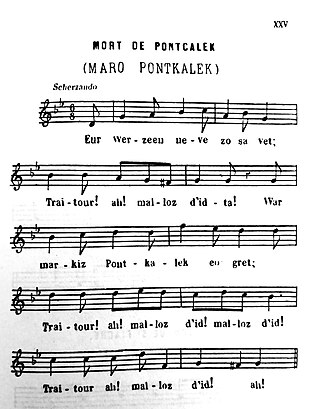
"Marv Pontkalleg" is a traditional gwerz, included as no. XLVI in Barzaz Breiz, a book of traditional Breton songs collected in Cornouaille, Brittany, in the 19th century by Théodore Hersart de la Villemarqué. The death of the Marquis de Pontcallec following a conspiracy against the kingdom of France, is an authentic historical incident recounted by Hersart De La Villemarqué in the Barzaz Breiz; this version praises the militant and valiant nobility of his country in opposition to the bourgeoisie. "Marv Pontkalleg" is one of the classics of Breton music, and has been recorded many times by, among others, Gilles Servat, Tri Yann, Alan Stivell, Andrea Ar Gouilh and Jacques Pellen.
The Gwerz an Aotrou Nann is a gwerz in the Barzaz Breiz, previously entitled La Korik and Le Seigneur Nann et la Korrigan.
